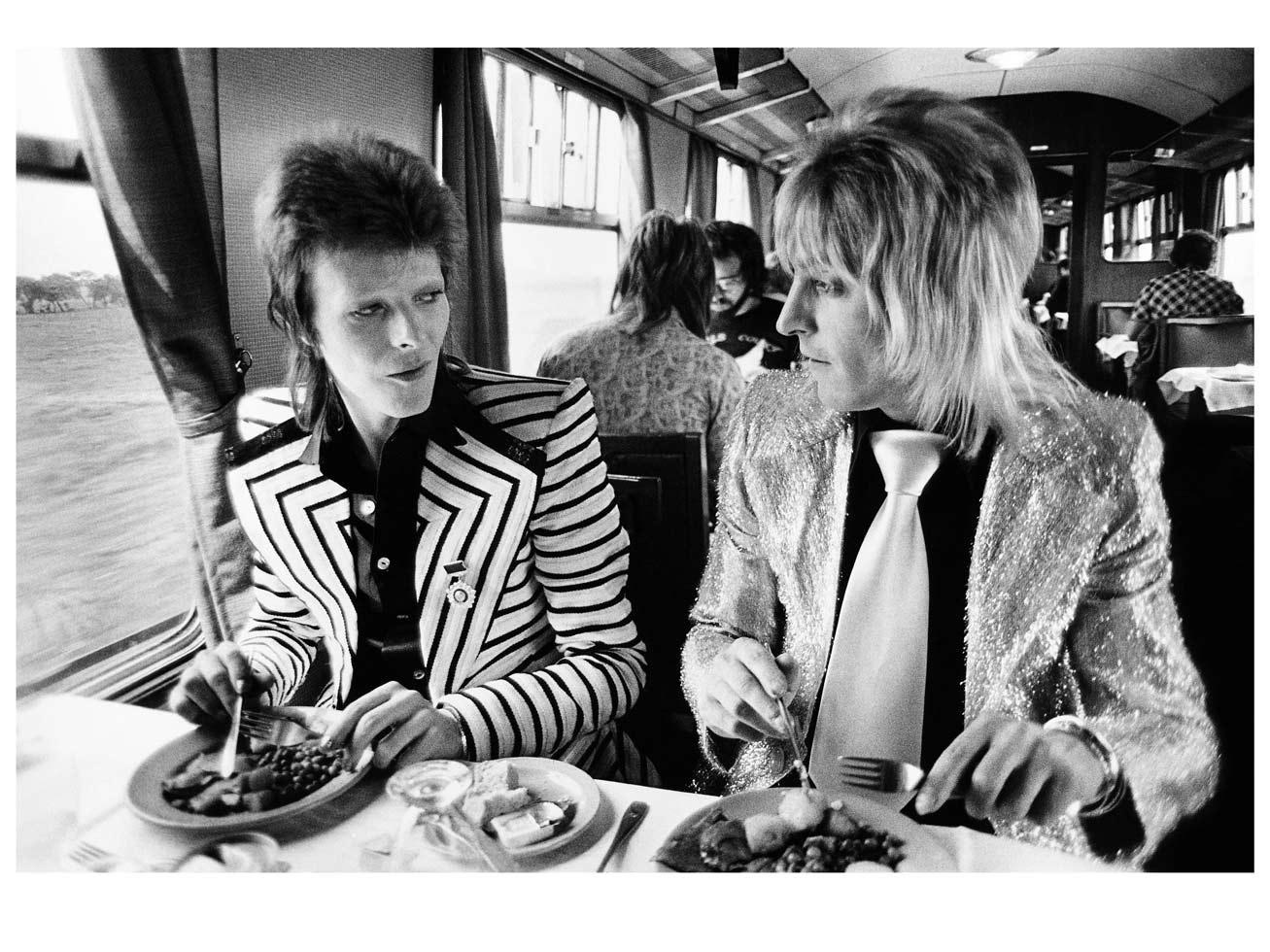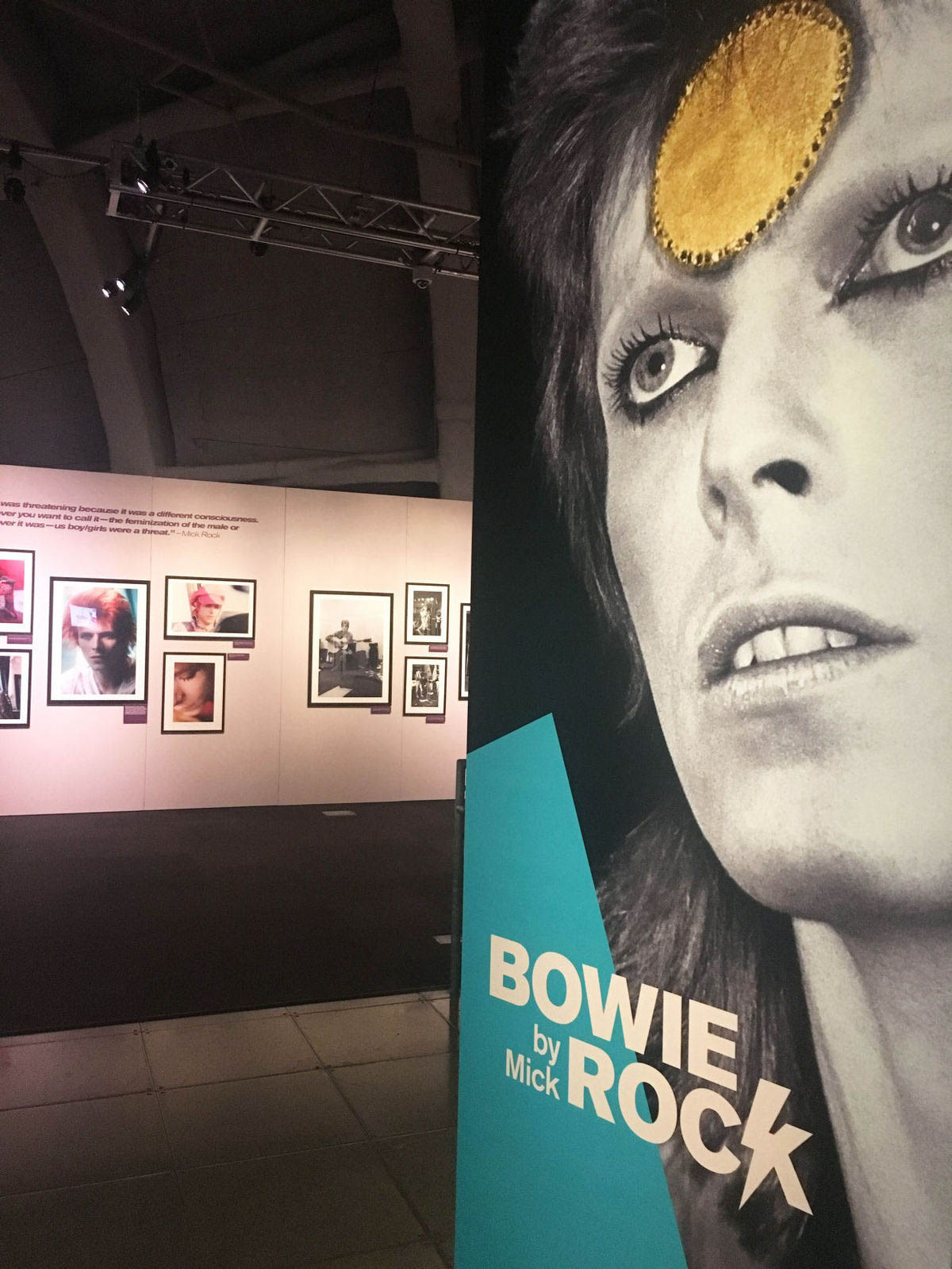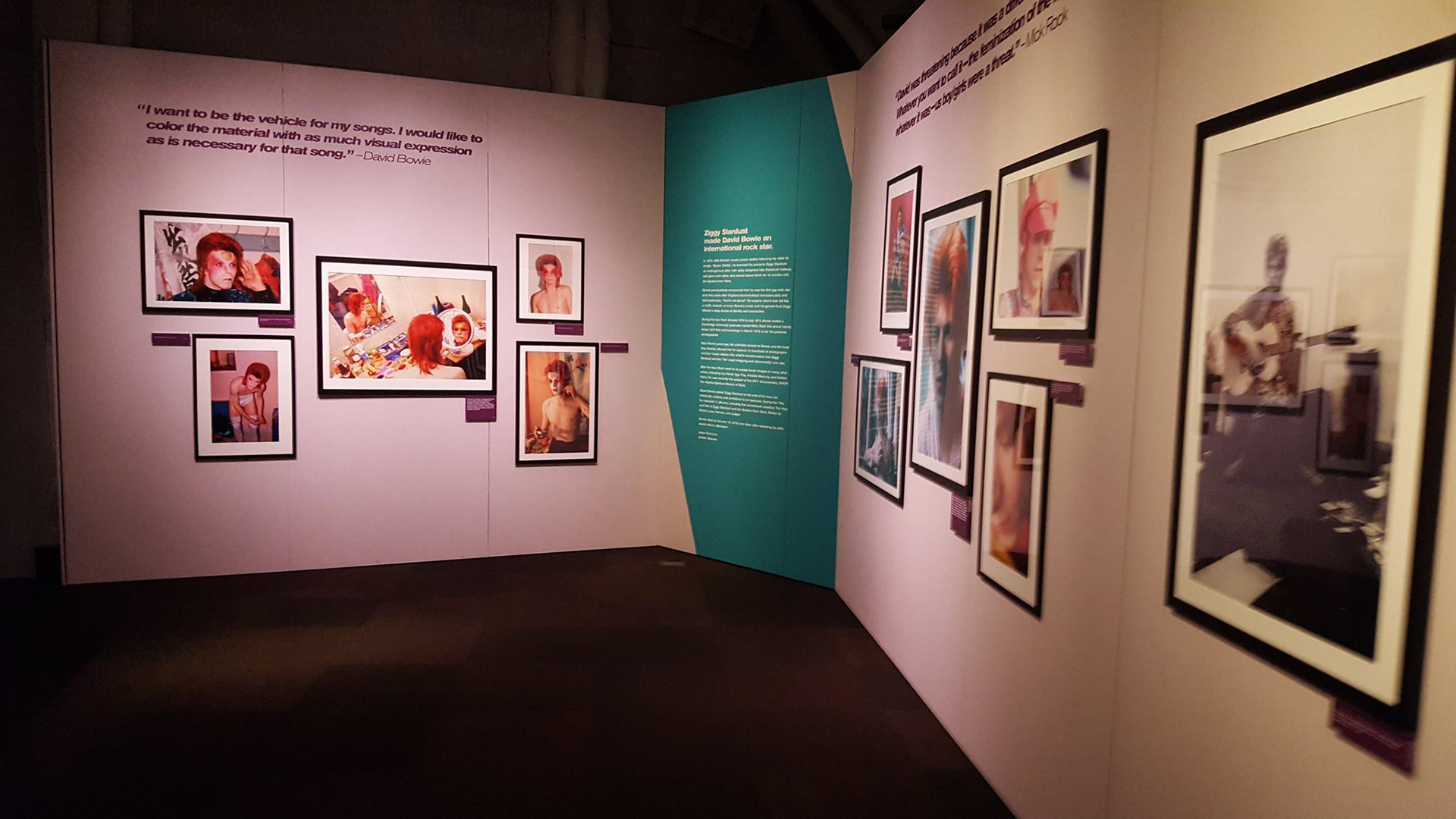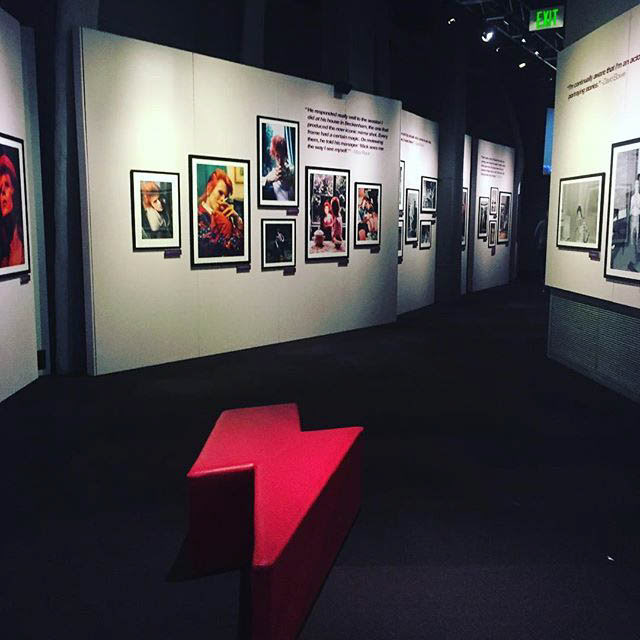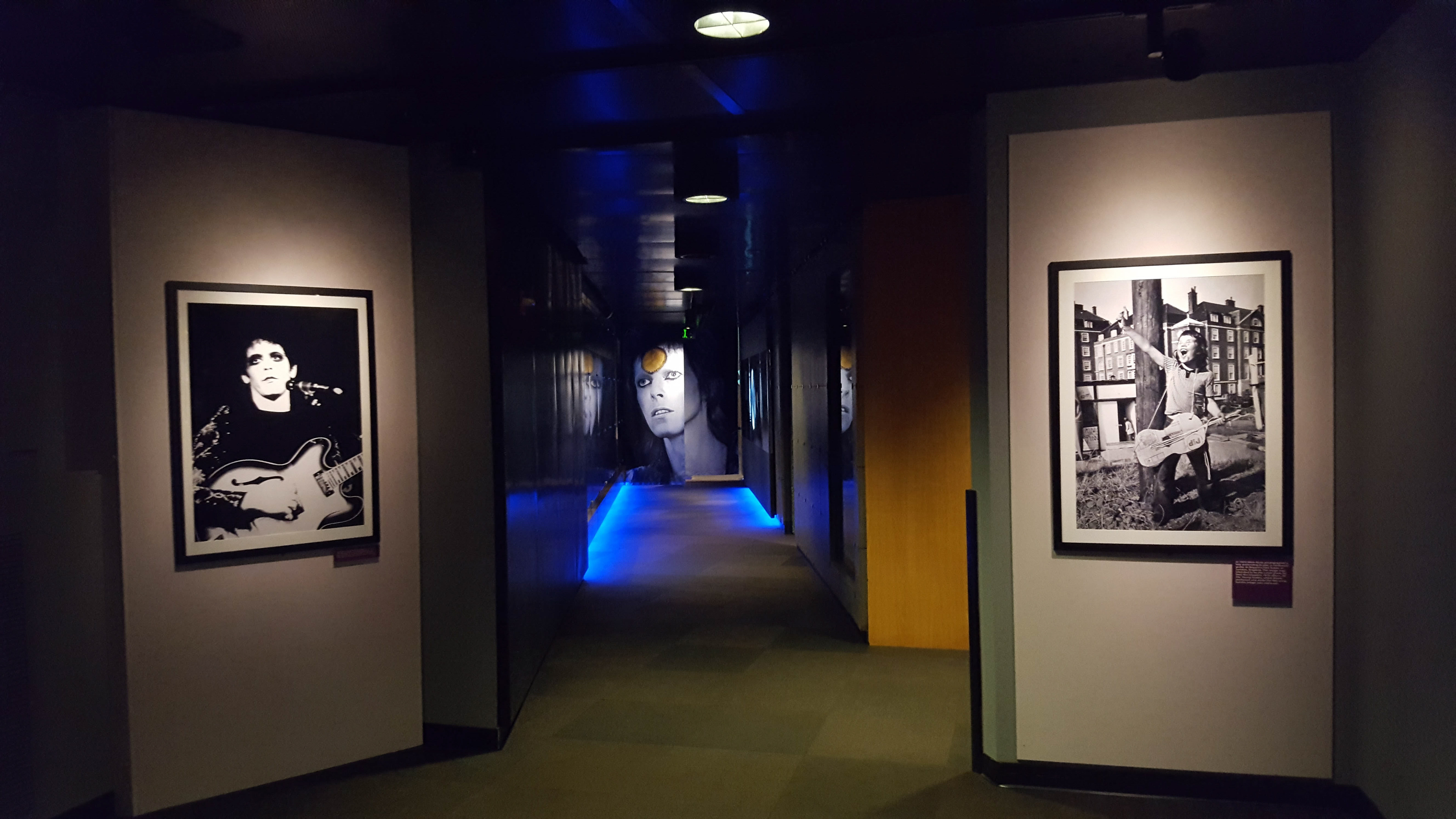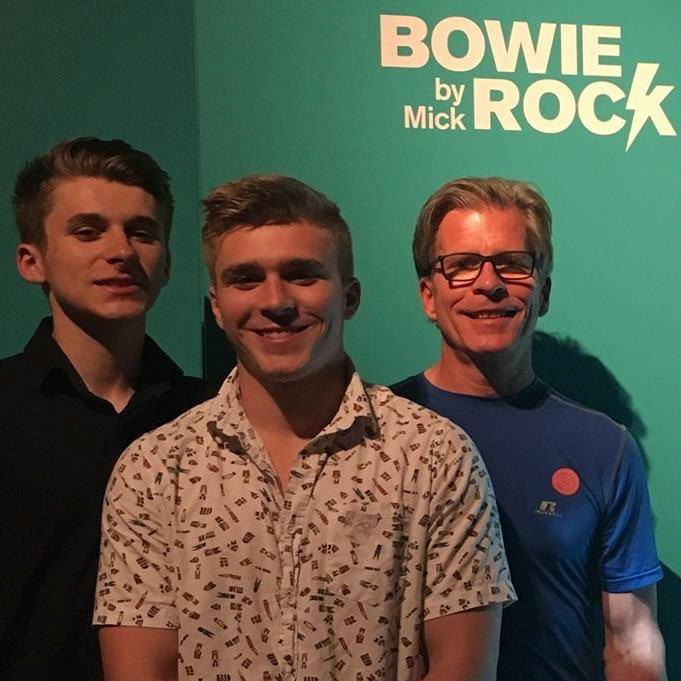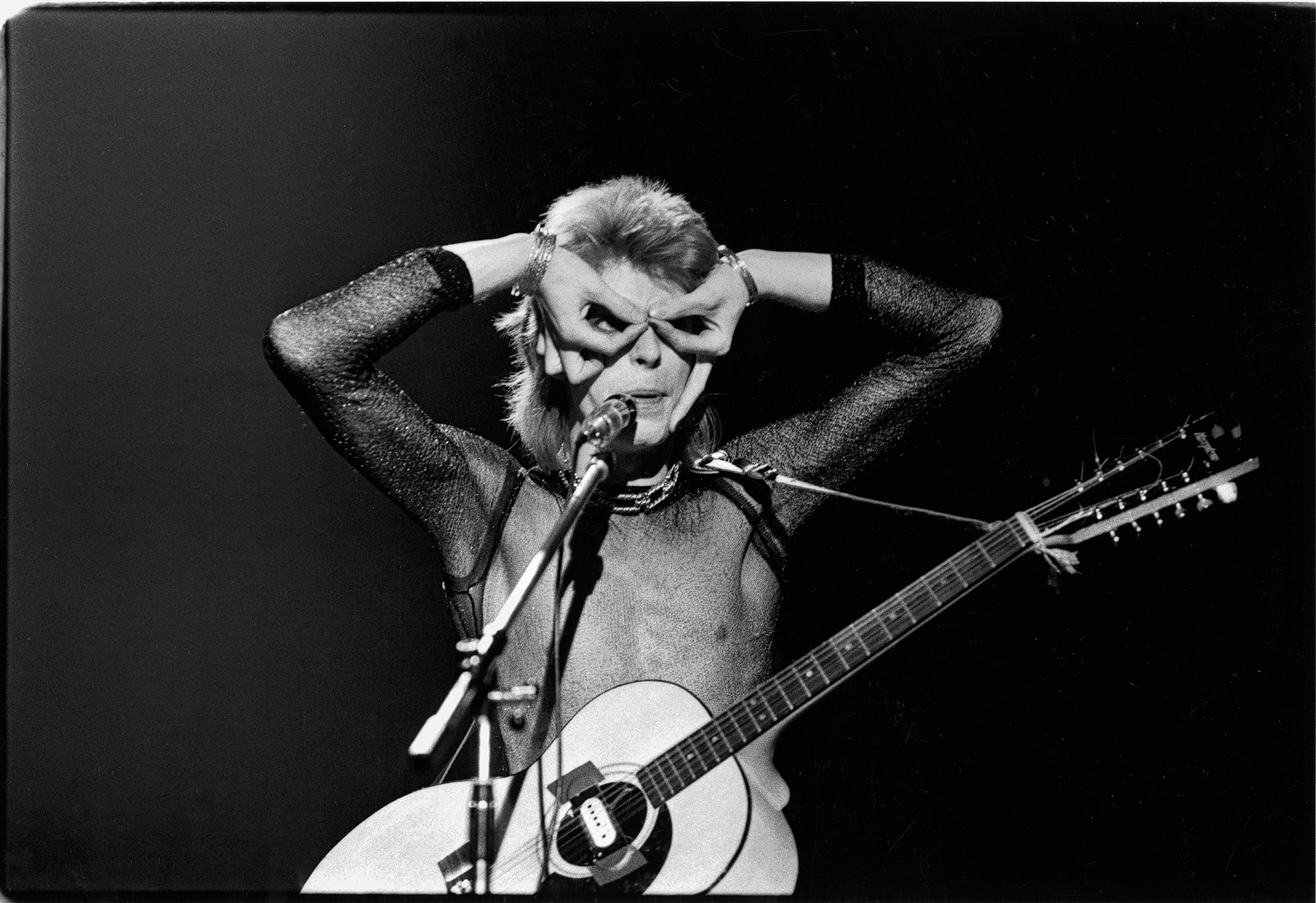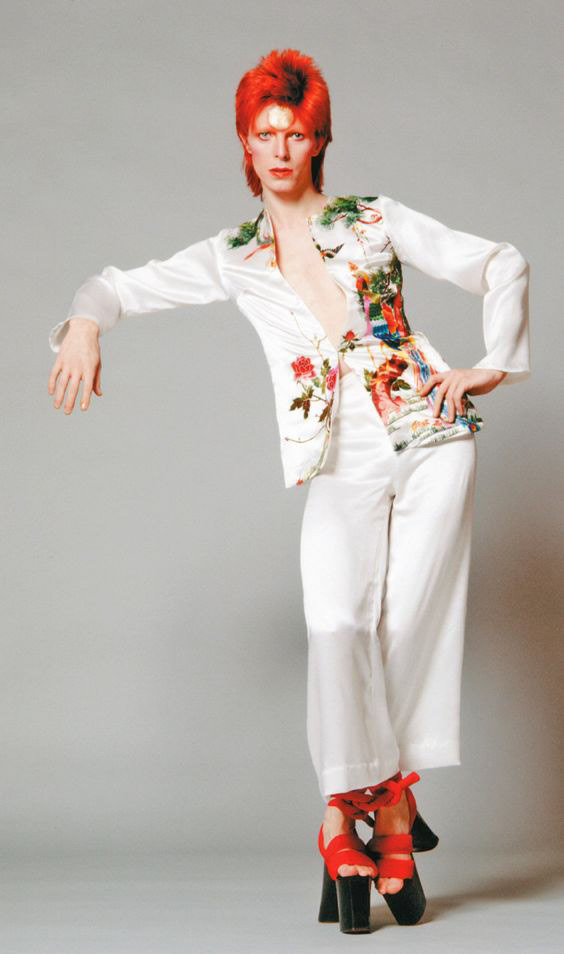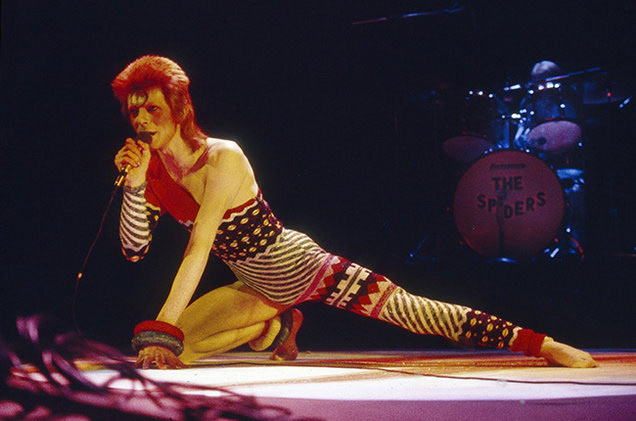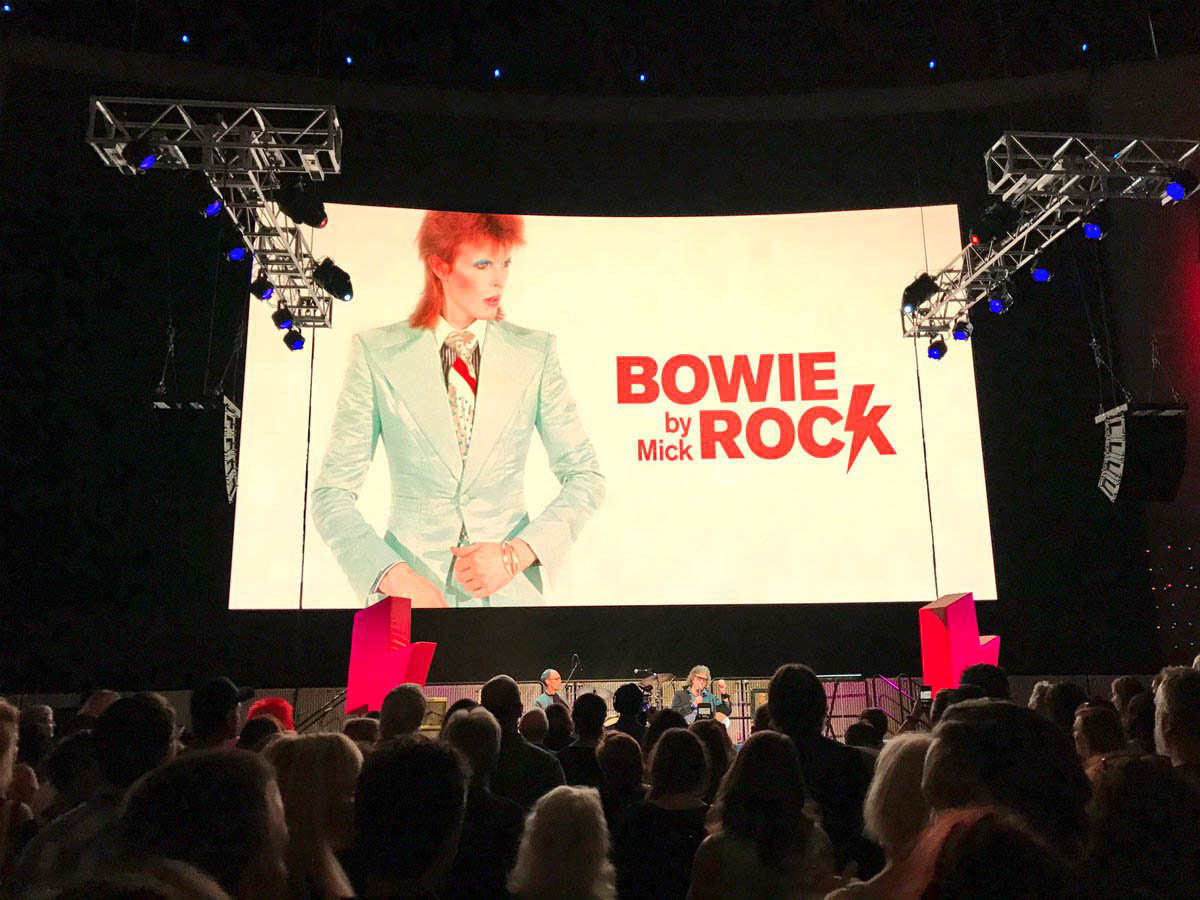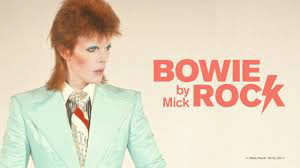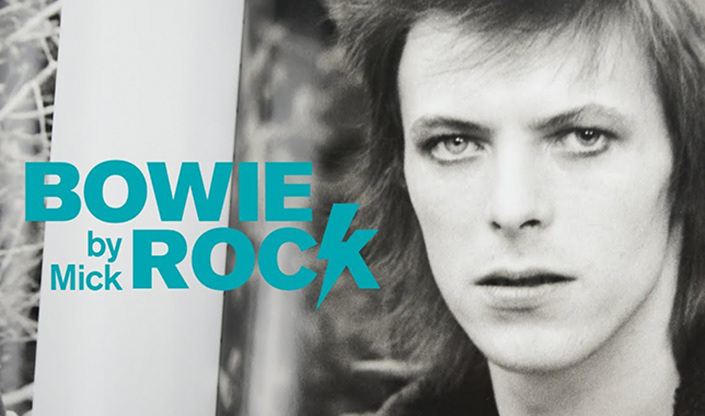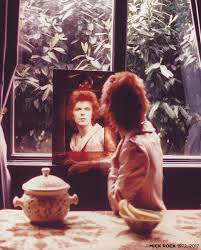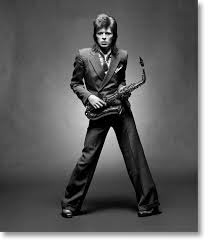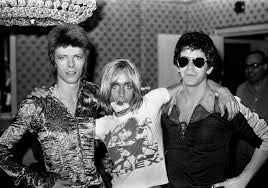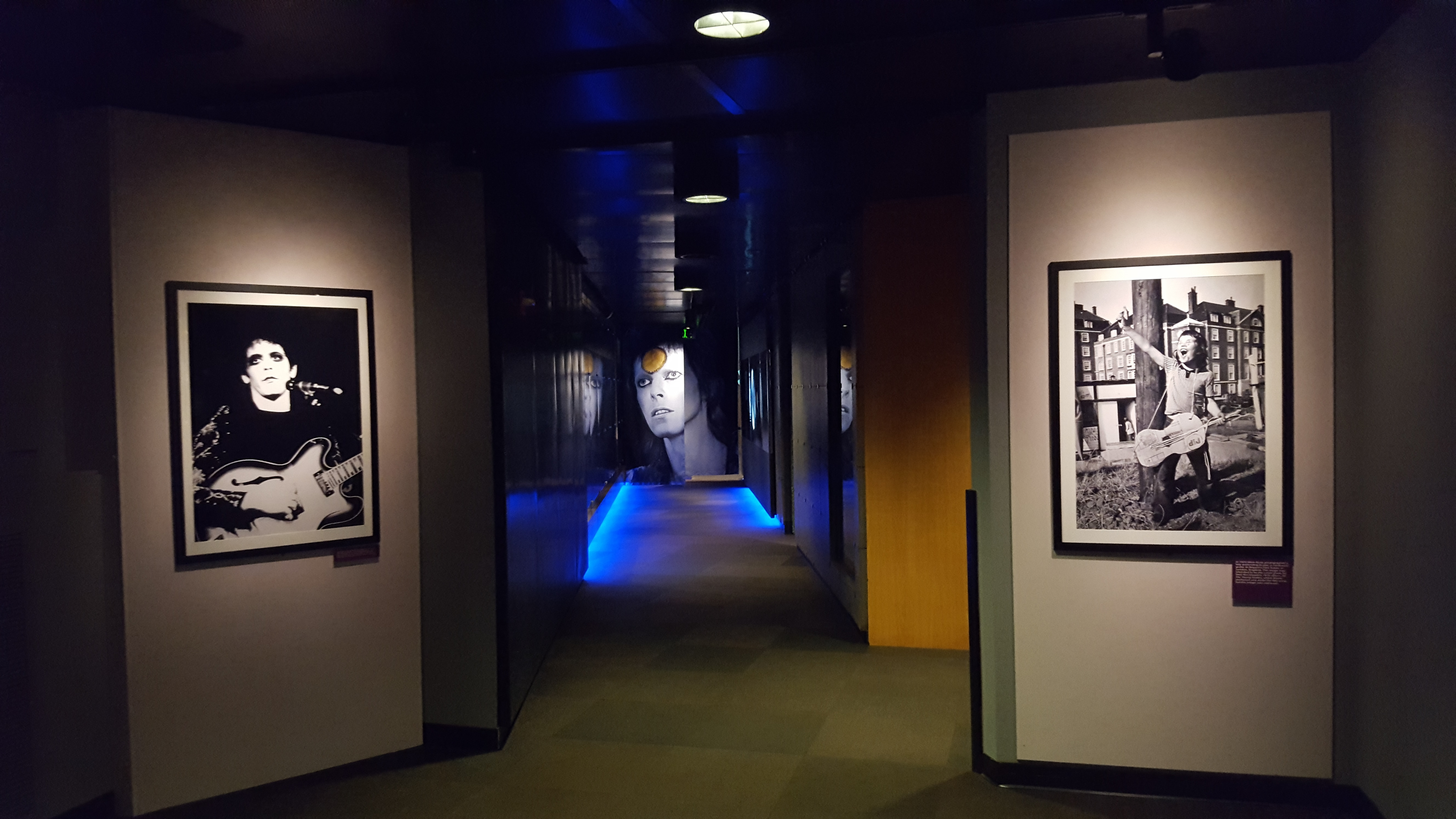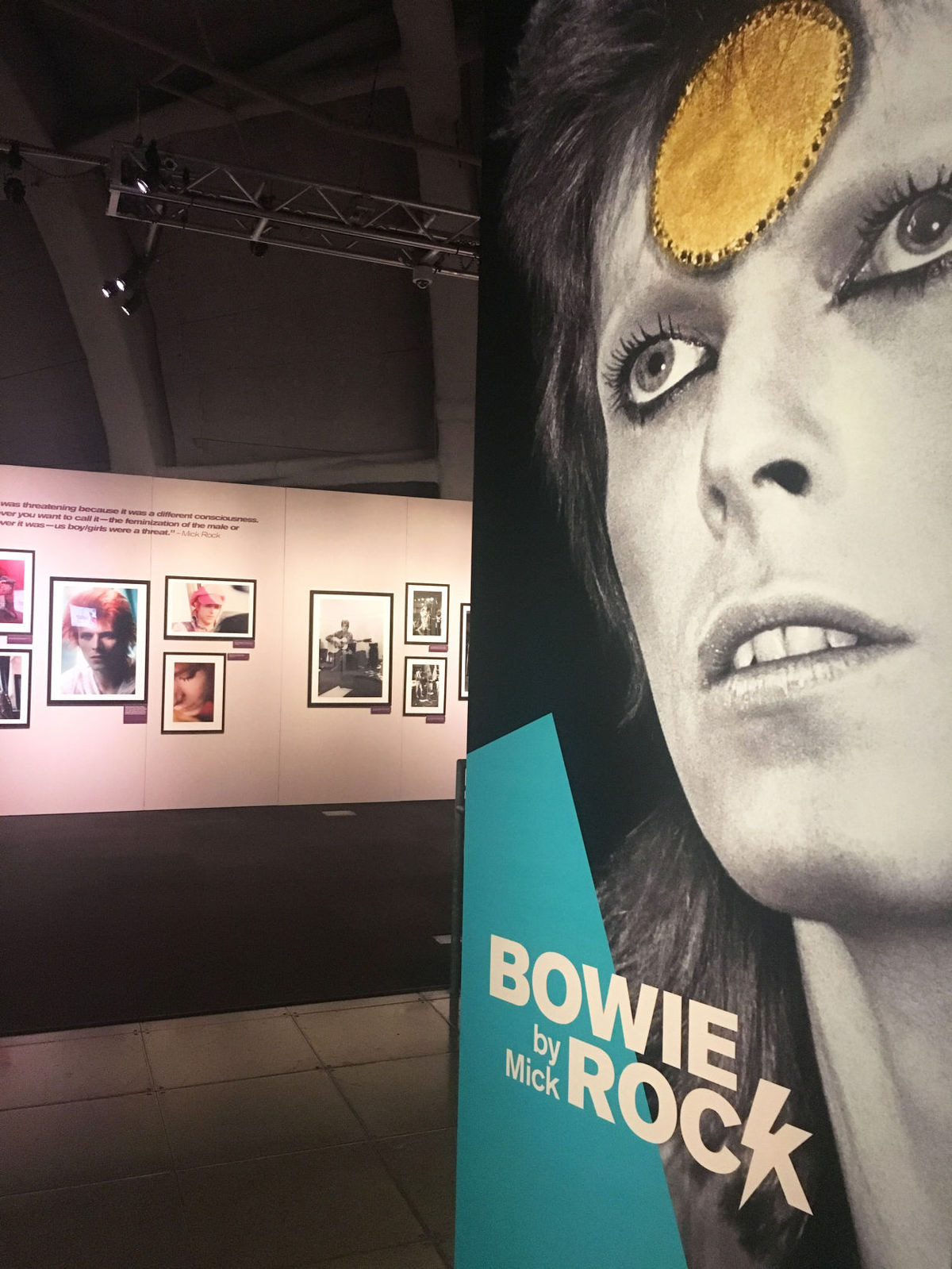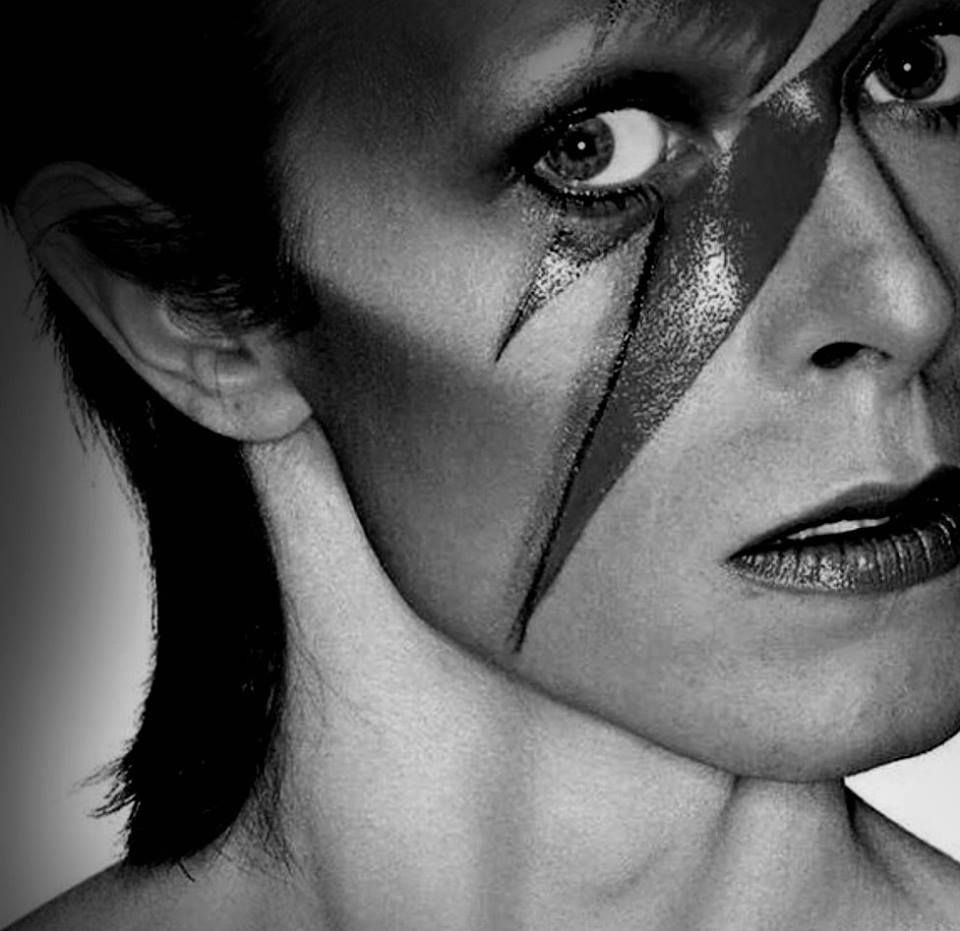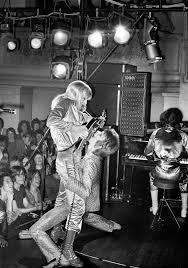CASE STUDY, BOWIE BY MICK ROCK
EXHIBIT OVERVIEW
A landmark photographic exhibition chronicling David Bowie’s transformative early 1970s period, as captured by legendary photographer Mick Rock. For this project, Vox Museorum was granted exclusive access to the original session tapes from the recording of The Rise and Fall of Ziggy Stardust and the Spiders from Mars—a privilege that uniquely enabled us to craft immersive soundscapes rooted in Bowie’s own creative materials. The exhibition immersed visitors in Bowie’s evolution into Ziggy Stardust through iconic images, rare video, and the creative partnership that shaped an era.
HISTORICAL CONTEXT
How odd that a space alien - David Bowie in the guise of Ziggy Stardust - helped open our eyes to the powerful alienation experienced by youth culture in the 1970’s. But there was nothing alien about the humanity and hope engendered by a change agent who transformed a culture through the sheer force of his originality, imagination and fearlessness. David Bowie’s Ziggy persona, developed in a climate of rebellion and creative cross-pollination (notably with Andy Warhol and Lou Reed), redefined glam rock, gender expression, and visual music culture. Mick Rock’s photos embody how this era fused music, art, and identity, profoundly influencing future generations.
ASSIGNMENT
Vox Museorum was commissioned to design and implement distinct immersive soundscape loops (3–5 minutes each) for four key exhibition environments: Gallery Entrance. Main Gallery. Immersive Bowie Anteroom. Immersive Hall of Ziggy Exit Gallery The brief: craft site-specific music and sound design to emotionally and energetically anchor each space, facilitate Mick Rock’s visual narrative, and support visitor movement and engagement—while addressing the challenges of a multigenerational audience and entirely open gallery architecture.
AUDIENCE STRATEGY
Designed for a multigenerational audience spanning Bowie aficionados, music history lovers, and families (including children as young as six).
Balances nostalgia and discovery: longtime fans relive formative moments, while new generations experience Bowie’s boundary-shifting impact within an engaging, sensory-rich environment.
Sound levels, musical motifs, and emotional arcs were tailored to sustain attention and accessibility across all age groups.
CREATIVE SOUNDSCAPE STRATEGY
Rather than playing direct lifts of Bowie’s commercial recordings (which could cause harmonic clash and diminish immersion), we developed new “audio space diasporas”—original modulating beds and motifs with analogue synth, droning guitars, mellotron, and period instrumentation.
A metaphorical 'space' guided our sonic approach and provided thematic anchors using a combination of tracks taken from original sessions and new instrumentation, we extrapolated, deconstructed, and remixed Bowie’s music for presentation over an immersive twenty-channel speaker array. Vintage 'space,' ancient strings. A brave new world."
Entrance Gallery: We selected Five Years,” the opening track from The Rise and Fall of Ziggy Stardust and the Spiders from Mars to introduce the exhibit to visitors. We deconstructed the original recording and began the soundscape with Bowie’s voice alone in an initial a cappella version, positioned to come from directly above—as if descending from heaven. As visitors enter, Bowie’s voice welcomes them in a celestial, almost spiritual manner. Gradually, the rest of the track emerges, enveloping the gallery and drawing listeners into Ziggy’s world.
FIVE YEARS REIMAGINED
Main Gallery: Instrumental “Space Oddity” Reconstruction
For the Main Gallery, titled the “Church of Man,” we created an entirely new instrumental reconstruction of Bowie’s iconic “Space Oddity.” This version invites visitors to immerse themselves in the emotional and cosmic landscape of the song—stripped of vocals except for one crucial moment: Bowie’s famous countdown. This lone vocal motif punctuates the soundscape, anchoring the experience in anticipation, wonder, and collective memory, while allowing the visual narrative and gallery energy to take center stage.
For the Main Gallery, titled the “Church of Man,” we created an entirely new instrumental reconstruction of Bowie’s iconic “Space Oddity.” This version invites visitors to immerse themselves in the emotional and cosmic landscape of the song—stripped of vocals except for one crucial moment: Bowie’s famous countdown. This lone vocal motif punctuates the soundscape, anchoring the experience in anticipation, wonder, and collective memory, while allowing the visual narrative and gallery energy to take center stage.
SPACE ODDITY REIMAGINED
Bowie Ante Room: For the quiet, reflective Bowie Ante Room, we reimagined the classic Bowie anthem "All the Young Dudes" as a gentle, meditative soundscape. Originally made famous by Mott the Hoople, "Dudes" was an early call for inclusivity—a song that gave hope to those who felt like outsiders. In our version, the iconic lyrics are replaced by soft, haunting mellotron melodies, evoking the spirit and message of the song. This musical approach honors the enduring relevance of Bowie's message of acceptance, allowing its emotional resonance to reach a new generation in a subtle, inviting way.
ALL THE YOUNG DUDES REIMAGINED
Hall of Ziggy Exit Gallery: We said goodbye to exhibit visitors with "The Transformers," a Glam inspired mashup that captured the spirit of the downtown Manhattan ecosystem Bowie encountered when his Ziggy Stardust persona “fell to earth” in 1972. At that time, Lou Reed and his creative catalyst Andy Warhol were transforming popular culture from the inside out. The creative and cultural energy of this downtown alliance was explosive—film, dance, theatre, and fashion collided with music, fueling the rapid rise of Glam, Glitter, Punk, and Disco, and ushering in iconic bands like Mott the Hoople, T. Rex, New York Dolls, Kiss, and Alice Cooper.
HANG ONTO YOURSELF REIMAGINED
TECHNICAL CONSIDERATIONS
Spatial Sound Movement: A multi-channel speaker array (16–20 channels, both floor-level and overhead) allowed for dynamic panning and vertical/lateral movement, amplifying the sensation of journeying through Bowie’s world.
